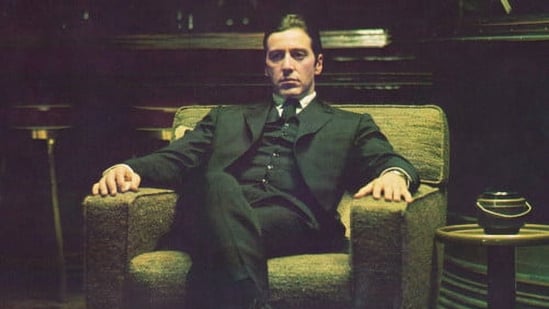The Godfather Part II: Shadows of Power, Echoes of Legacy
Cinemapedia
Francis Ford Coppola’s The Godfather Part II is a rare cinematic achievement that matches, and in some ways surpasses, the brilliance of its predecessor. Released in 1974, this sequel and prequel hybrid expands the Corleone saga with a dual narrative structure, exploring both the rise of a young Vito Corleone (Robert De Niro) and the moral descent of his son, Michael Corleone (Al Pacino). It is a tale of ambition, betrayal, and the heavy weight of legacy that cements its place as one of the greatest films ever made.
Two Paths, One Destiny
The film’s innovative narrative structure intertwines two timelines. The first chronicles Vito Corleone’s journey from a Sicilian orphan to a powerful New York crime boss. De Niro’s Oscar-winning performance captures Vito’s quiet determination and charisma, revealing the foundations of the Corleone empire.
The second timeline follows Michael as he struggles to maintain the family’s power amidst betrayal and loss. His efforts to expand the Corleone influence into Nevada and Cuba come at a steep personal cost, as he alienates his family and succumbs to paranoia. Al Pacino’s masterful portrayal of Michael’s cold, calculated descent into isolation is both tragic and riveting.
The dual narratives create a poignant contrast between Vito’s rise and Michael’s fall, illustrating the cyclical nature of power and the corrupting influence of ambition.
A Cinematic Masterpiece
Gordon Willis’s cinematography, often dubbed "The Prince of Darkness," once again brings a moody and evocative atmosphere to the screen. The sepia tones of Vito’s early years contrast sharply with the stark, shadowy visuals of Michael’s present-day struggles. This visual dichotomy underscores the film’s themes of growth and decay.
The meticulous production design recreates early 20th-century New York and mid-20th-century America with stunning authenticity. From the bustling streets of Little Italy to the opulent Lake Tahoe estate, every setting immerses the viewer in the Corleone world.
A Haunting Elegy
Nino Rota’s iconic score returns, enriched by new compositions that reflect the film’s expanded emotional scope. The mournful strains of the main theme capture the sorrow and inevitability of the Corleone family’s trajectory.
The music serves as an emotional undercurrent, amplifying key moments of triumph and tragedy. Whether accompanying Vito’s early struggles or Michael’s moments of betrayal, the soundtrack remains an indelible part of the film’s identity.
The Cost of Power and Legacy
The Godfather Part II delves deeper into the moral complexities of power and family. Vito’s story, though rooted in crime, is driven by a desire to protect and provide for his family. In contrast, Michael’s actions, though ostensibly for the same purpose, lead to betrayal, loneliness, and moral decay.
The film explores the paradox of legacy: the very empire Vito builds to secure his family’s future becomes the source of its undoing. Michael’s final act of fratricide underscores the ultimate cost of his ambition, leaving him isolated and consumed by guilt.
A Cinematic Triumph
The Godfather Part II is a masterclass in storytelling, performance, and filmmaking. It deepens the themes of its predecessor while carving its own path as a monumental work of art. Coppola’s vision, combined with the unforgettable performances of Pacino and De Niro, creates a film that is as emotionally resonant as it is thematically rich.
For viewers, The Godfather Part II is not just a continuation of the Corleone saga but a profound exploration of power, family, and the choices that define us. It is a haunting reminder that the pursuit of power often comes at the cost of one’s soul, leaving behind only shadows and echoes of what once was.


